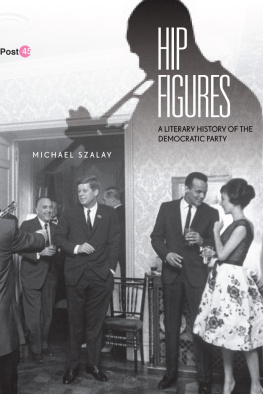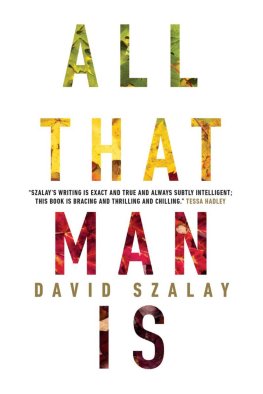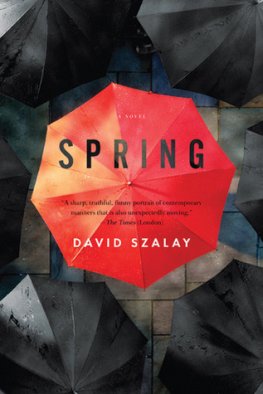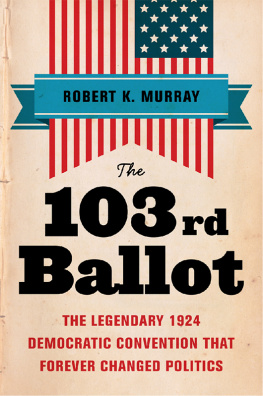Szalay - Hip figures a literary history of the Democratic Party
Here you can read online Szalay - Hip figures a literary history of the Democratic Party full text of the book (entire story) in english for free. Download pdf and epub, get meaning, cover and reviews about this ebook. City: Stanford;California, year: 2012, publisher: Stanford University Press, genre: Politics. Description of the work, (preface) as well as reviews are available. Best literature library LitArk.com created for fans of good reading and offers a wide selection of genres:
Romance novel
Science fiction
Adventure
Detective
Science
History
Home and family
Prose
Art
Politics
Computer
Non-fiction
Religion
Business
Children
Humor
Choose a favorite category and find really read worthwhile books. Enjoy immersion in the world of imagination, feel the emotions of the characters or learn something new for yourself, make an fascinating discovery.
Hip figures a literary history of the Democratic Party: summary, description and annotation
We offer to read an annotation, description, summary or preface (depends on what the author of the book "Hip figures a literary history of the Democratic Party" wrote himself). If you haven't found the necessary information about the book — write in the comments, we will try to find it.
Szalay: author's other books
Who wrote Hip figures a literary history of the Democratic Party? Find out the surname, the name of the author of the book and a list of all author's works by series.
Hip figures a literary history of the Democratic Party — read online for free the complete book (whole text) full work
Below is the text of the book, divided by pages. System saving the place of the last page read, allows you to conveniently read the book "Hip figures a literary history of the Democratic Party" online for free, without having to search again every time where you left off. Put a bookmark, and you can go to the page where you finished reading at any time.
Font size:
Interval:
Bookmark:


Florence Dore and Michael Szalay, Editors
Post45 Group, Editorial Committee
Hip Figures
A Literary History of the Democratic Party
Michael Szalay
Stanford University Press
Stanford, California
Stanford University Press
Stanford, California
2012 by the Board of Trustees of the Leland Stanford Junior University. All rights reserved.
This book has been published with the generous assistance of UC Irvine.
No part of this book may be reproduced or transmitted in any form or by any means, electronic or mechanical, including photocopying and recording, or in any information storage or retrieval system without the prior written permission of Stanford University Press.
Printed in the United States of America on acid-free, archival-quality paper
Library of Congress Cataloging-in-Publication Data
Szalay, Michael, 1967- author.
Hip figures : a literary history of the Democratic Party / Michael Szalay.
pages cm. -- (Post 45)
Includes bibliographical references and index.
ISBN 978-0-8047-7634-9 (cloth : alk. paper) -- ISBN 978-0-8047-7635-6 (pbk. : alk. paper) -- ISBN 978-0-8047-8261-6 (e-book)
1. American fiction--20th century--History and criticism. 2. Politics and literature--United States--History--20th century. 3. Democratic Party (U.S.)--History--20th century. 4. African Americans in literature. 5. Popular culture in literature. 6. Liberalism in literature. 7. Race in literature. I. Title. II. Series: Post 45.
PS374.P6S93 2012
810.9'358--dc23
2012009458
Designed by Bruce Lundquist
Typeset at Stanford University Press in 10/15 Minion
Table of Contents
Acknowledgments
This project would have been impossible without the generous help of my peers. I owe a special debt to all my friends and colleagues in Post, many of whom I no doubt will fail to name here, but all of whom have contributed, in one way or another, to making our meetings as consistently rewarding as they are. Id also like to thank all of those at Stanford University Press who decided to bet on Post and who have helped it grow. Im particularly grateful for the help of Emily-Jane Cohen, Mary Katherine Maco, Jan McInroy, and Emily Smith. Id like to thank Amanda Anderson, Jami Bartlett, Marshall Brown, Ellen Burt, Abigail Cheever, Michelle Chihara, Jeff Clapp, Amanda Claybaugh, J. D. Connor, Miles Corwin, Mary Esteve, Paul Gilmore, Mark Goble, Lauren Goodlad, Brandon Gordon, Eric Hayot, Andy Hoberek, Amy Hungerford, Oren Izenberg, Cathy Jurca, Arlene Keizer, Lee Konstantinou, Julian Koslow, Richard Kroll, Rodrigo Lazo, Jayne Lewis, Alan Liu, Catherine Liu, Dennis Lopez, Steve Mailloux, Rolland Murray, Debbie Nelson, Sianne Ngai, Lauren Pey, John Plotz, Ken Reinhard, Bruce Robbins, Stephen Schryer, Stephen Shapiro, Victoria Silver, Eric Sundquist, Elisa Tamarkin, Harvey Teres, Alan Wald, Andrzej Warminski, John Williams, and Alex Woloch. I am particularly grateful to those kind souls who, in one capacity or another, read all of this manuscript: Dale Bauer, Jerry Christensen, Florence Dore, Barbara Foley, Eric Lott, Deak Nabers, Jack Matthews, Sean McCann, and Mark McGurl. The debts grow still larger here, toward the very bottom: Richard Godden read multiple versions of these chapters, and shaped each one of them in decisive ways. Thank you, Richard. Lastly, and most importantly, Hip Figures would not have been possible without the keen eye, critical acumen, and steady, loving hand of Andrea Henderson. I dedicate this book to her, and to my daughter, Clara.
Very early versions of this project appeared in the Yale Journal of Criticism and Modern Language Quarterly. appeared in American Literary History.
Introduction
Days after the inauguration of Barack Obama, the Republican National Committee elected Michael Steele, an African American, to become its chairman. In the following weeks, Steele embraced what National Public Radio described as a hippersome may say a hip-hopvernacular to breathe vigor into the demoralized GOP. The Washington Times reported the chairmans desire for an off the hook public relations blitz targeting young Latinos and African-Americans in hip-hop settings. This was the Republicans answer to the widespread perception that they were out of touch, too white and too set against the future to understand those beyond their traditional core. To be sure, Steeles search for a hipper vernacular didnt register a significant change in the GOP, and this was not simply because his chairmanship was contested from the start, and ultimately short-lived. Republicans remained attached at their grass roots to the modern conservative movement crystallized by Barry Goldwater, committed to consolidating white supremacy, concentrating wealth, and privatizing the New Deal welfare state. Steele simply announced the partys willingness to market new messages to new segments of the voting public as the situation demanded. The language might change, but the message would not: as Steele put it, Obamas big government stimulus package was just a wish list from a lot of people who have been on the sidelines for years... to get a little bling, bling.
Steeles gambit was of course pointedly counterintuitive: if one of the two parties had an obvious affinity with hip black culture, it was the Democratic Party. A tide of rappers had turned out during the 2008 race for Obama. Ludacris had led the charge: as his Obama Song put it, You cant stop whats bout to happen, we bout to make history / The first black president is destined and its meant to be. Breathless, American Prospect declared, Whether or not he is aware of it, Barack Obama is the first hip-hop presidential candidate. The moment seemed to abound in historical firsts. The New Republic described Obamas presidency, one year later, as the first cool presidency, and Politico described the president as the nations first hip president. Watch him walk, Politico urged. Listen to him talk. See the body language, the expressions, the clothes. Hes got attitude, rhythm, a sense of humor, contemporary tastes.
These announcements bespoke the fervent hope that Obamas election represented a definitive departure from the nations long and ugly history of racism. The American public had elected a man with dark skin to its highest office. Who could refrain from wondering what opportunities this would create for entire classes of people? In his epochal race speech, Obama had sought to remind Americans that many of the disparities that exist in the African-American community today can be directly traced to inequalities passed on from an earlier generation that suffered under the brutal legacy of slavery and Jim Crow. The candidate seemed poised to redress these disparities, and it was tempting to see his hip in this light. Where did this mans cool come from? asked Michelle Cottle of the New Republic. A white writer, Cottle cited African American journalist Donna Britt on the distinction between cool and brother cool, and reminded her readers that maintaining a calm and collected outward appearance had often been, for black men, a matter of life and death. But in Cottles hands, the defense mechanism became a potent weapon: possessed of a brother cool, Obama wielded a controlled fire that gave him the upper hand in virtually all his political dealings.
Font size:
Interval:
Bookmark:
Similar books «Hip figures a literary history of the Democratic Party»
Look at similar books to Hip figures a literary history of the Democratic Party. We have selected literature similar in name and meaning in the hope of providing readers with more options to find new, interesting, not yet read works.
Discussion, reviews of the book Hip figures a literary history of the Democratic Party and just readers' own opinions. Leave your comments, write what you think about the work, its meaning or the main characters. Specify what exactly you liked and what you didn't like, and why you think so.












